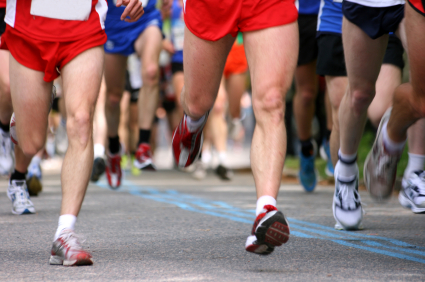Achilles Tendon

 The Achilles tendon is the largest and strongest tendon in the body. The tendon may be required to withstand forces of up to 10 times the patient’s body weight with activity. The Achilles tendon is prone to tendonitis, tendinosis and ruptures. Tendonitis can be divided into insertional and non-insertional. There are two bursae associated with the insertion of the Achilles tendon, one deep to the tendon the retro-calcaneal bursa and one superficial. Achilles tendonitis is associated with over use syndromes, postural problems, problems with shoe wear and also inflammatory arthropathies. The Achilles tendon does not have a true synovial sheath but a peritenon. Achilles tendonitis can be classified into three stages:
The Achilles tendon is the largest and strongest tendon in the body. The tendon may be required to withstand forces of up to 10 times the patient’s body weight with activity. The Achilles tendon is prone to tendonitis, tendinosis and ruptures. Tendonitis can be divided into insertional and non-insertional. There are two bursae associated with the insertion of the Achilles tendon, one deep to the tendon the retro-calcaneal bursa and one superficial. Achilles tendonitis is associated with over use syndromes, postural problems, problems with shoe wear and also inflammatory arthropathies. The Achilles tendon does not have a true synovial sheath but a peritenon. Achilles tendonitis can be classified into three stages:
- Stage 1 – Peritendonitis
- Stage 2 – Peritendonitis and Tendinosis
- State 3 – Tendinosis
The treatment of Achilles tendonitis can be divided into operative and nonoperative. Non-operative treatment consists of rest, anti-inflammatories, orthotics and activity modification. Should symptoms persist despite this approach then surgery has been described. Surgery usually consists of resection of the inflamed peritenon together with a debridement of the degenerate tendon.
In cases of insertional Achilles tendonitis this may need to be combined with a resection of a prominent Haglund deformity (a prominence of the posterior superior aspect of the calcaneus).
Rupture of the Achilles tendon is well recognised ana usually occurs in the middle aged patient. Patients usually experience a snap or blow to the back of the leg. Most ruptures occur in the intra tendinous region. There is still a range of opinion regarding the best way of managing ruptures of the Achilles tendon. Non-operative treatment in an equinus plaster is associated with a higher rerupture rate and the tendon healing in an over lengthened position. Operative treatment allows accurate tensioning of the gastroc-soleus complex. Surgery also carries with it a lower re-rupture rate and a higher chance of returning to the level of sport at which the injury was sustained. Surgery however carries with it risks, in particular poor wound healing, infection and nerve injury.